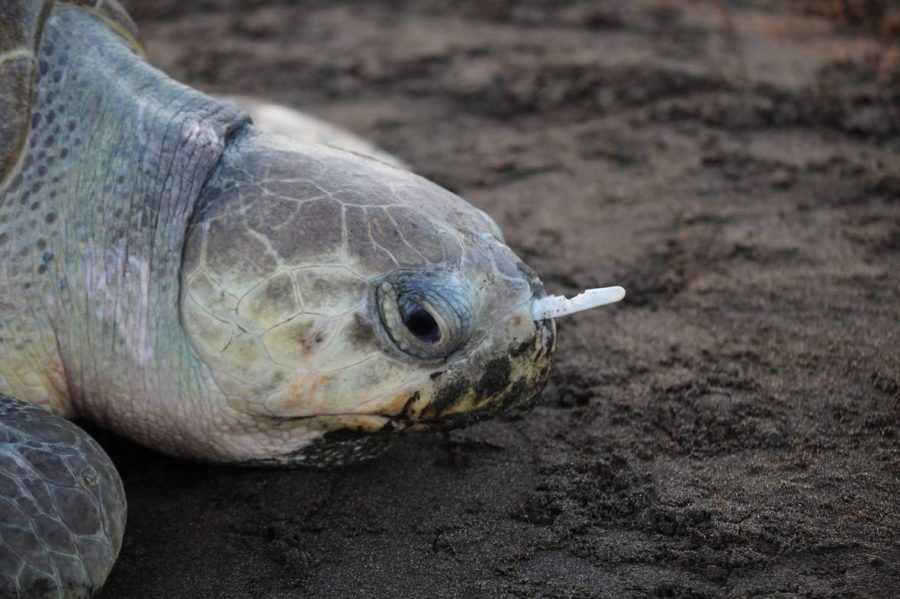Plastic Straws: Banned
October 5, 2018
The ban on plastic straws is becoming a larger issue all over the world today. After a video of a man removing a straw from a sea turtle’s nose went viral, this has been a large debate. A National Geographic article by Sarah Gibbens states, “One million seabirds and one hundred thousand marine mammals are killed annually from plastic in our oceans. Forty four percent of all seabird species, twenty two percent of whales and dolphins, all sea turtle species, and a growing list of fish species have been documented with plastic in or around their bodies.” I feel that the ban of plastic straws is a positive thing for the environment. It will help reduce plastic waste in landfills and help to reduce litter. The ban will reduce waste in oceans and on beaches as well. Plastic straws are very lightweight which makes it very easy for them to end up in the ocean. They are also not biodegradable so they just break into smaller pieces called microplastics, which sea animals often mistake for food. Maura Judkis makes a comparison in the Washington Post that states, “Plastic straws are to 2018 as cigarettes were to the early 2000s.”
Those against this ban say if people recycled their straws it wouldn’t be an issue. The lightweight makeup of plastic straws, though, causes issues with recycling them. They are so lightweight that they often don’t make it through the recycling sorters, and therefore end up in landfills and waterways, such as our oceans. Minimizing the use of plastic straws is just one way to reduce the amount of plastic we generate each year.
Those with disabilities who cannot lift their head to drink without a straw, or those who require plastic straws on a day to day basis to take fluids and medications voice that they will struggle with the ban in place. There are many different alternatives that can be used that are not plastic, including, silicone, collapsible, metal, bamboo and glass. The options are all good for different drinks. Reviews for the glass straws got the best ratings to use with any drink. Another argument those against the ban put up is, straws are better for your dental health. They reduce acid attacks on tooth enamel. What they don’t understand is the ban is on one type, plastic straws, not the different reusable alternatives. Those against also bring to light the cost of alternatives, which can be 8 times more expensive. The alternatives last longer than a plastic straw you would use once and then toss in the trash. Essentially, the price evens out. Fifty percent of the plastic we use, is used once and then thrown away. These alternatives will help to prevent that. Another argument those opposed have is the alternatives are no better than the regular plastic straws, but that is really just personal preference.
There are already many cities, along with a few companies that have banned plastic straws, according to an article by Devorah Lev-Tov from National Geographic. Seattle, Washington, Miami Beach and Fort Myers, Florida; Starbucks by 2020; McDonald’s in the United Kingdom and Ireland restaurants; Bon Appétit Management (a food service company with 1,000 U.S. locations); and Alaska Airlines, due to an environmentally conscious girl scout who encouraged them to get rid of their use of plastic straws. The whole state of California has a diluted version of the ban. California’s version of the ban specifies full-service restaurants only, may not provide straws unless specifically requested by the customer. This law, however, excludes Malibu, Davis, and San Luis Obispo because they have the overall ban in place. In most cases straws are not even needed, so it is not a problem to use one of the alternatives to plastic straws, or skip using one altogether. Less straws being used means less plastic in landfills, on the streets, and in our waterways.











